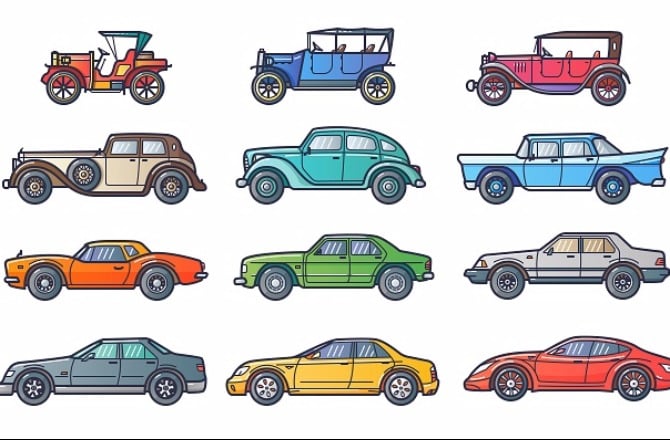The Evolution of Cars
The Evolution of Cars
Cars have come a long way since their invention in the late 19th century. From the first steam-powered vehicles to modern electric cars, the evolution of cars has been driven by technological advancements, changing societal needs, and environmental concerns.
The first cars were powered by steam and were slow, bulky, and expensive to operate. In the early 20th century, gasoline-powered cars began to replace steam-powered ones. These cars were faster, more efficient, and less expensive to operate, making them more accessible to the general public.
In the 1920s and 30s, cars became more stylish and streamlined, reflecting the Art Deco aesthetic of the time. Cars also became more affordable and reliable, with mass production techniques pioneered by companies like Ford and General Motors.
In the post-World War II era, cars became symbols of American freedom and prosperity. Cars like the Chevrolet Bel Air and the Ford Thunderbird were designed with large, flashy fins and chrome accents, embodying the optimism and excess of the time.
In the 1970s, however, rising fuel costs and concerns about the environment led to the development of smaller, more fuel-efficient cars. Cars like the Honda Civic and the Volkswagen Beetle became popular, reflecting a shift towards more practical and environmentally-friendly vehicles.
Today, electric cars are becoming more common as concerns about climate change and air pollution continue to grow. Electric cars are powered by rechargeable batteries and emit no emissions, making them a popular choice for environmentally-conscious consumers.
As cars continue to evolve, it's clear that they will continue to be shaped by technological advancements and changing societal needs. From steam-powered behemoths to sleek electric vehicles, cars have come a long way in a relatively short amount of time.
Comprehension Questions:
What powered the first cars?
a) Gasoline
b) Electricity
c) Steam
Answer: c) Steam
What made gasoline-powered cars more accessible to the public?
a) They were slower and less efficient
b) They were more expensive to operate
c) They were faster, more efficient, and less expensive to operate
Answer: c) They were faster, more efficient, and less expensive to operate
What did cars in the 1920s and 30s reflect in their design?
a) The Art Deco aesthetic of the time
b) The minimalist aesthetic of the time
c) The Victorian aesthetic of the time
Answer: a) The Art Deco aesthetic of the time
What did cars in the post-World War II era represent?
a) American freedom and prosperity
b) Environmental concerns and practicality
c) The minimalist aesthetic of the time
Answer: a) American freedom and prosperity
Why are electric cars becoming more popular?
a) They emit no emissions and are environmentally-friendly
b) They are faster and more efficient than gasoline-powered cars
c) They are cheaper to operate than other cars
Answer: a) They emit no emissions and are environmentally-friendly

Comments
Post a Comment